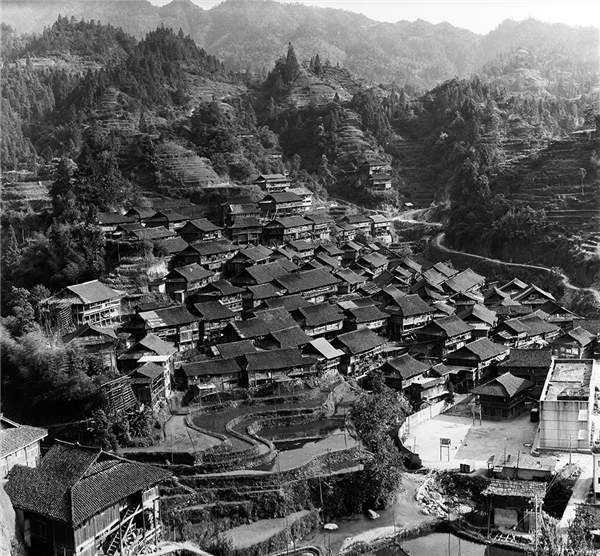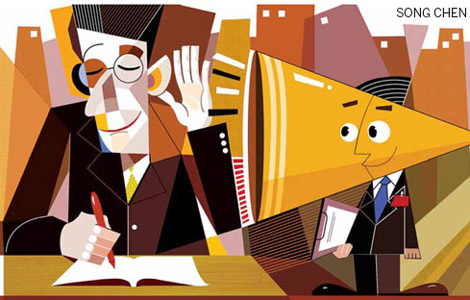Camera couple preserve Miao culture and customs
Updated: 2014-03-13 09:19
By Yu Fei (China Daily)
|
||||||||
 |
|
Tianbiantun, a settlement in the village of Yaogao in the Guangxi Zhuang autonomous region. |
"The whole society is changing, and the original, simple life of the Miao people will be diluted and altered in the process of modernization and urbanization. I think we should keep some of their culture and cherish the memories."
Jiang had often doubted the worth of his efforts until he met professor Liu Shuyong, the dean of art and design at the Institute of Culture and Media under the Central University of Finance and Economics in Beijing.
"He told me that the village was nothing extraordinary, but that in itself gave it universal significance," Jiang recalls.
With the encouragement, Jiang persevered. He collected a large amount of materials to help him better understand Yaogao.
"At first, the villagers avoided my lens. My wife and I tried to make friends with them and we did make a lot of good friends. We became so familiar with each other that they eventually took no notice of our cameras. So we captured many vivid, natural images."
Many villagers had never seen photos before. Every time the couple went there, they gave the villagers prints of photos they had taken previously. They have handed out more than 2,500 photos.
"Once we took a picture of an old lady. But the next time we couldn't find her. A neighbor told us she had passed away. She had never seen a photo in her life."
Jiang and his wife took hundreds of thousands of pictures featuring the environment, houses, portraits, costumes, weddings, childbearing, food, education, medical treatment, farming, transportation, celebrations, funerals and other rituals in the area.
Few villagers are staying to continue farming as most have moved to towns over the past decade. Many traditional wooden houses have been replaced by brick buildings. Only the elderly wear traditional attire, as young people prefer jeans and Western-style clothes.

 Gorgeous Liu Tao poses for COSMO magazine
Gorgeous Liu Tao poses for COSMO magazine
 Post-baby Duchess
Post-baby Duchess
 Victoria Beckham S/S 2014 presented during NYFW
Victoria Beckham S/S 2014 presented during NYFW
 'Despicable' minions upset Depp's 'Lone Ranger' at box office
'Despicable' minions upset Depp's 'Lone Ranger' at box office
 'Taken 2' grabs movie box office crown
'Taken 2' grabs movie box office crown
 Rihanna's 'Diamonds' tops UK pop chart
Rihanna's 'Diamonds' tops UK pop chart
 Fans get look at vintage Rolling Stones
Fans get look at vintage Rolling Stones
 Celebrities attend Power of Women event
Celebrities attend Power of Women event
Most Viewed
Editor's Picks

|

|

|

|

|

|
Today's Top News
NYC building collapses
China, mutinational team expand search for missing jet
Crimea declares independence
Vietnam partially suspends search
Lenovo guarantees IBM strikes
Snowden defends his NSA leaks
Hunts for fugitives to intensify
Malaysia track jet to west coast
US Weekly

|

|









